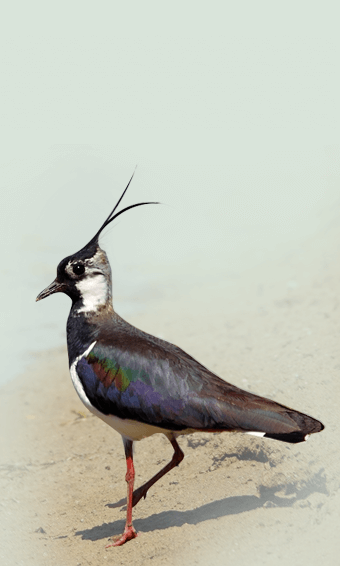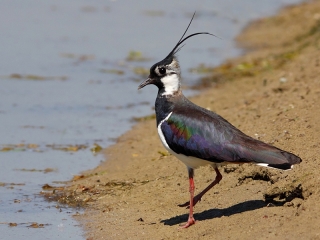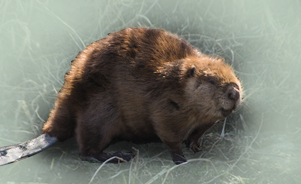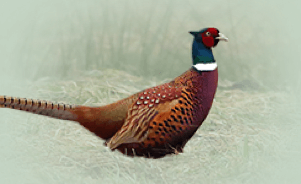The Northern Lapwing Vanellus vanellus

Features
It is the largest representative of the lapwing family and is similar in size to a pigeon. The northern lapwing is a loud bird, which we often hear at night, especially when intruders are pushed out during nesting periods.
| Species | Bird |
| Living space | Field, Meadow, Swamp |
| Size | 28 to 31 cm |
| Weight | 220 g |
Description
From far away, the birds appear to be black and white with long legs, and, from close up, the colors of their backs and the upper sides of their wings can be seen to glitter metallically in dark green to brownish-purple color shades. In the winter, the edges of the feathers on their backs fade. The front part of their necks, beaks, and the lines over their white cheeks and the tops of their heads, which are adorned with long pockets of thin feathers, are black. The whiteness of their abdomens spread to the undersides of their wings to their 'wrists' and the rest of the lower sides of their wings is black. Their jaws and the lower parts of the tail are rusty brown, and the upper sides of their tails are white with black triangular marks at the end. Their legs are a dirty pink color. - Between April and July they nest in grasslands in the lowlands. THey prefer to live in naturally wet meadows, and they also nest in pastures and grasses with piles of bare land and even in fields. A shallow nest is made in low-growth areas. After completing the nesting, the northern lapwings gather into large flocks, which then migrate from Europe to their wintering grounds in Africa. In winter, the northern lapwings remain very sociable; they spend the nights in groups in large, open pastures and look for food in wet meadows, on the banks of rivers and lakes, in pristine fields and in coastal areas. They mainly feed on insects (larvae and adult specimens) as well as spiders, snails, earthworms and amphibians, while a small part of their diet is made up of seeds and other parts of plants.The Northern Lapwing
on the habitat Temenica
The northern lapwing can be observed near the Temenica in spring and summer.

Features Temenica (3)
SPECIAL ogr.




